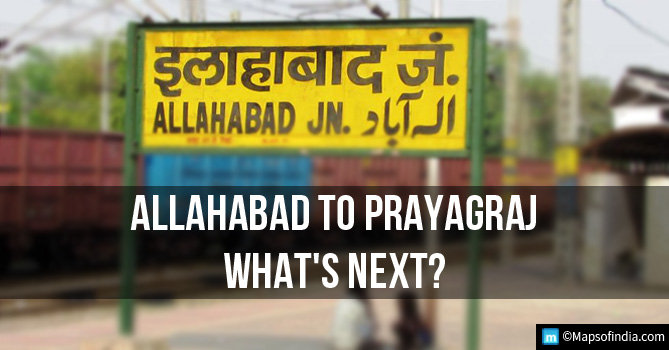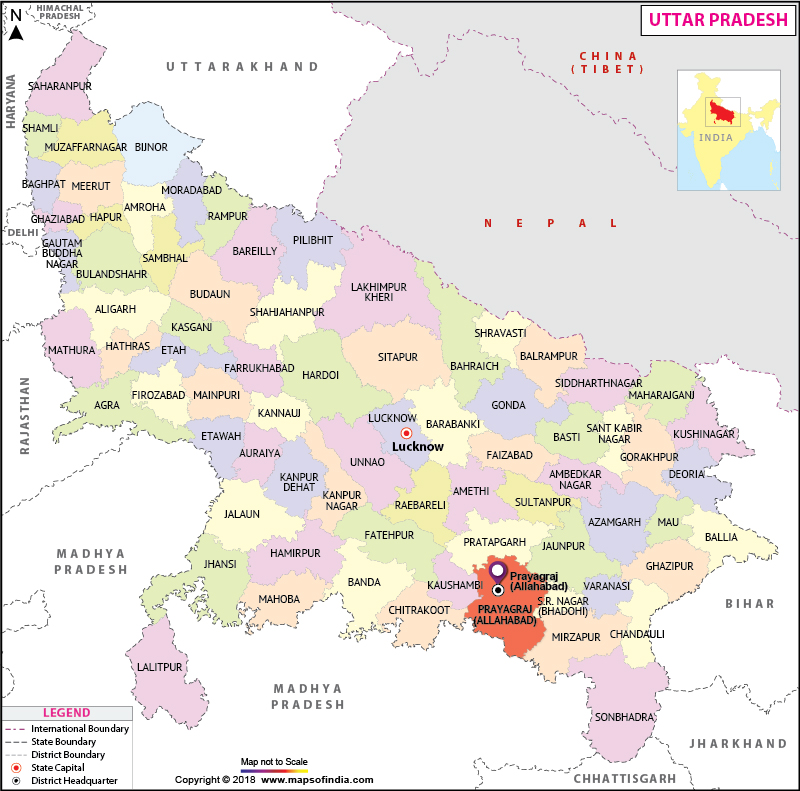
“What’s in a name? That which we call a rose/ By any other name would smell as sweet.”
-William Shakespeare
Rest assured, he did not have India in mind while writing this. We all know, names do matter in our country, often to the point where people become determined enough to dig up centuries old past to justify themselves. And, what do we name or rename in India, or Bharat, or Hindustan – whichever name you prefer? Anything we can! Be it roads, railway stations, airports, entire cities. Don’t fool yourself into thinking it’s a recent phenomenon though.
India’s bond with name-changing goes way back than these last 4-5 years. The nation has had a long history of name altering, going as far back as our independence. With the latest viral news of Allahabad being named Prayagraj, an important question emerges. Is this practice really worth the hype and importance it is given. And, are we even going the right way?
Our history with name-changing
Not many people know this today, but the city of Kanpur was known as Cawnpore in the British era. It was one of the very first places to undergo a name-change post Independence (within a year). Visakhapatnam, a major city along the southern coast of the country, was often called Waltair prior to 1947. It was post-independence that the city entirely began to be referred to by its more “Indian sounding” name.
Janpath, one of the most important roads in the national capital, was initially known as “Queensway”. The famous Ram Manohar Lohia Hospital in Delhi, was established in 1932 by the Britishers, for their government staff. Back then, it was called Wellington Hospital, and it was only later that the name was changed. Many people still refer to it by its earlier name. So, when the country escaped the shackles of colonialism, it also launched an effort to remove whatever influence the Britishers had left behind. It’s a tradition that we have managed to keep intact all these years.
The question is, is the issue as relevant today as it was back then?
Recent times
On 27th September 2016, the government of Haryana officially announced the name change of Gurgaon, following the Union Government’s approval. The state’s largest city is now officially called “Gurugram”. Two years later, in August 2018, it was announced that the famous Leisure Valley Park from the city will now be known as Maharana Pratap Park. Both the changes have been protested against, time and again.
Another place that underwent a name-change in August, 2018 was the Mughalsarai Railway Junction. Carrying a rich, vast history in its name, the junction is among the oldest in the country. It is now officially known as Deen Dayal Upadhyay Railway Junction, a name that was proposed by Yogi Adityanath-led UP government, and later approved by the centre.
The state of Uttar Pradesh seems to have undergone a lot of name changes, though. With the state cabinet granting its approval on October 17th 2018, the city of Allahabad will now officially be known as Prayagraj. However, the list does not end here.
In 2013, under the leadership of Mamata Banerjee, the state of West Bengal saw its own series of name alterations. Few of the changes that were announced are as follows:
Broad Street (Alipore) to Ustad Bade Ali Khan Sarani; Creek Row to Sir Nilratan Sircar Sarani, and so on.
In 2014, the famous Aurangzeb Road of Delhi was renamed as Dr. APJ Abdul Kalam Road, following a request by Maheish Girri, a BJP Member of Parliament. There have also been brief talks for changing the name of Akbar Road.
Why are the names of places changed?
To form, or give out a proper opinion on this practice of name-changing, we first need to look at the picture as closely as possible. The most popularly cited reason is that by giving these places new names, we are removing influences of invaders from our country. For example, Waltair was the name given by the Britishers to the city of Visakhapatnam, quite evident by the etymology.
In the newer cases, Gurgaon was changed to “Gurugram” stating that the latter was the name of the city in ancient times – derived from Guru Dronacharya from Mahabharata. It is claimed that the name was “Guru-gram” which got distorted with time, finally settling at “Gurgaon”. The supporters of “Gurugram”, hence, state that the renaming is just a way of preserving our culture.
A similar reason is given for the name change of Allahabad, saying that in ancient times, it was known as “Prayag”, up until 1575. It is said that Akbar then renamed the city to “Illahabas”, roughly translating to “Abode of God”. Over the years, with slight modifications and altered pronunciations, the place began to be known as “Allahabad”.
An (uncomfortable) opinion
What’s in a name? Nothing. A thing or place does not lose its traits, or anything else, regardless of what you choose to call it. However, with this name-changing spree that the nation seems to be on, we need to be more considerate than otherwise. Here, the modified names don’t remain as harmless or innocent as “naming a rose something else”. Let’s discuss and try to answer a few questions.
Will changing the name of Allahabad to “Prayagraj” help the country in preserving and remembering its culture?
While a simple “no” would suffice, we’ll offer a more extended explanation. Let’s talk entirely from an economic perspective first. We know for certain that the name change will:
- not lead to any monetary or economic benefits. Because again, what’s in a name?
- result in resources being spent, at least on getting the new name replace the old one on government properties, and so on. Not to mention, it is an entirely fruitless effort.
Moving on to a more political, or even sentimental discourse, there are plenty of reasons why changing the name to Prayagraj will not do any good. For more than 4 centuries now, the city has been known by the name of “Allahabad”. Thousands of people born and raised in the city, associate themselves with this name. The new name, therefore, poses a far more practical concern of erosion. Moreover, the name “Prayag” already exists in unofficial use within the periphery of this city. The locals use this name often, historical documents cite it as well. So, there is no “threat” of ignorance it faces.
The word “Prayag” literally means “an area of confluences”, or in Hindi- “Sangam”. The area of sangam is referred to as “Prayag” by the locals even today. So, there was no need to uproot the entire cultural history of the city by renaming it.
Does the name change send a positive message?
Here, we first take the example of “Gurugram”. When the name was changed, there was protest, not just because people believed that it was a pointless exercise, but also because it hurt the sentiments of a large section of the society. Guru Dronacharya, while being a respected figure and a great teacher for many, is not looked up to by the Dalit community. The reason is both obvious and understandable- his bias against Eklavya, because of the latter coming from a lower caste.
To put up a brief summary: changing names of cities, roads, airports etc simply does not do any good to the country. The real, everyday problems people face still remain the same. Add to that, the renaming is bound to hurt the sentiments of communities. With the Mughalsarai junction now named after the RSS member, Upadhyay- many voices in protest say that this is yet another apparent effort to “saffronise” the nation. Several locals feel uprooted from their own home, and to whose benefit?
If the government- be it Central or State, actually wants to do something for the people- it should focus on actual welfare planning. Politicising, and imposing religions on the names of places is the last thing we need. The country has seen enough lows already.
Updated Map of Uttar Pradesh
More blogs on name change





